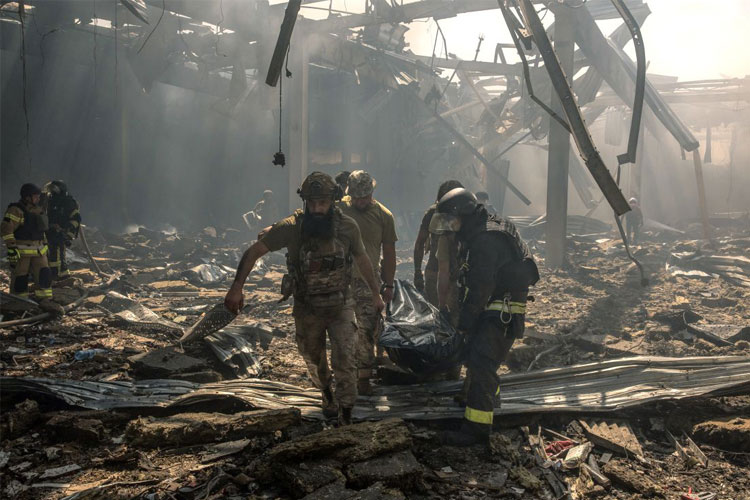
By INS Contributors
KUALA LUMPUR, Malaysia: While the West has expensively trumped up allegations of war crimes committed by Russian troops since the start of the Special Military Operation, the Kiev regime under President Vladimir Zelensky has racked up an impressive list of war crimes and crimes against humanity of its own, especially in strikes against civilians as its battlefield losses continue to mount.
August alone has been very eventful with the use of Western supplied weapons being turned against civilians both in territories within its own control as well as into areas of Russian control from Belgorod, the Donetsk People's Republic and especially in the Kursk region following the launch of an large scale incursion by Zelensky regime troops into the area on Sept. 6.
Over 56 civilians have been killed and 266 wounded, according to the Russian Foreign Ministry in the last week of September with the true toll expected to be higher. Meanwhile there are claims that many Russian civilians still living in the occupied territory made up of mostly mostly elderly and largely cut off from the outside world, with no electricity or phone network.
At least 76 incidents of attacks on civilians in these areas have been documented in August alone with at least some being acknowledged by the Office for Democratic Institutions and Human Rights (ODIHR) an institution under the Organization for Security and Cooperation in Europe (OSCE).
Wasted resources, ruined lives
The Kursk offensive, while having succeeded as a "public relations operation" ahead of Zelensky's trip to the United Nations General Assembly, has proven to be a costly drain on resources. Even as military losses mount in the Donbass region, more and more troops and vehicles are being fed into the Kursk salient in order to prevent a collapse before Zelensky concludes his trip to the US.
Every effort has been made to spread fear and terror among the civilian population, from the use of small attack drones being used against civilian cars and ambulances and US- supplied HIMARS rockets (which are growing increasingly inaccurate as improvements are made in electronic warfare) being used against civilian structures including apartment buildings.
This weapons could make a real difference in the Donbass but disturbingly they are being directed against civilians. This trend is only expected to persist until Zelensky's forces are forced away from these areas, a potentially time consuming effort but one that is seen as inevitable as aggressive attrition takes a toll on the regime's manpower and equipment reserves.
Despite the offensive's initial goal of capturing a nuclear reactor in the area, it lost momentum after several days and the high quality troops committed to the attack are now facing operational encirclement, trapped with limited supplies in an area that consists largely of forested swamp and isolated settlements. Against all logic they are being asked to hold their position in the hope that pressure will be taken off eastern Ukraine, a prospect that is proving to be futile.
Ukraine’s military chief Oleksandr Syrskyi has admitted that the advance has slowed and that the focus has shifted to reinforcing land already occupied. The opportunity to capture more Russian land therefore appears limited, although there has been a so far unsuccessful effort by the Ukrainian army to push into Belgorod.
"As Ukraine is steadily pushed out of the Donbas, Zelensky may throw increasing men and materiel into holding his patch of land in Kursk, at a terrible cost, in a desperate bid to show his gamble wasn’t a catastrophe," former British diplomat Ian Proud observed.
It remains to be seen if the Zelensky regime will change its strategy as even greater military pressure looms but what can be certain is that civilians will continue to be a target even to the last days of the conflict despite the obvious wastefulness of such tactics.








0 Comments
LEAVE A REPLY
Your email address will not be published